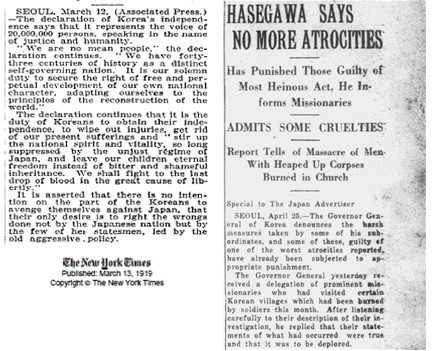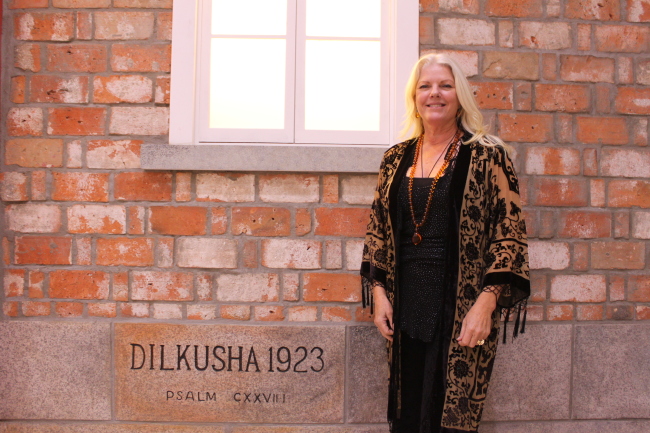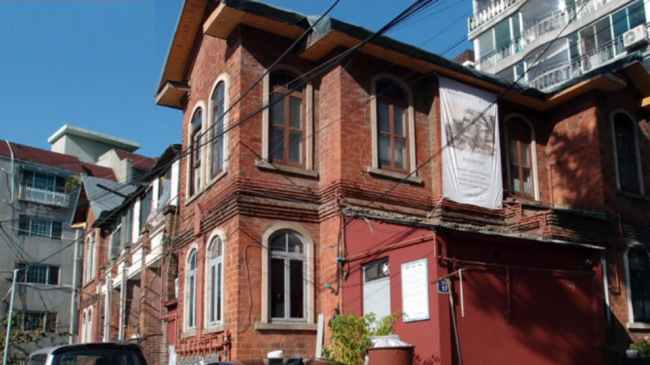The life and times of Albert Wilder Taylor, the US journalist who broke the news of the March 1 Movement and drew global attention to the plight of the Korean people under Japanese rule, are the subject of the exhibition “Dilkusha and Chain of Amber,” which runs through March 10 at the Seoul Museum of History.
Albert Taylor, who was in the gold-mining business as well as being a correspondent for United Press International and the Associated Press, arrived in what was then called Joseon in 1896. His stories on the March 1 Movement and the Jeam-ri Massacre played a crucial role in showing Korea’s independence movement to the outside world. The March 1 Movement was a series of demonstrations in 1919 calling for Korean independence from Japan; the same year, the Japanese retaliated with the massacre of some 30 civilians in Jeam-ri near Suwon, Gyeonggi Province.
 |
Copies of the New York Times and the Japan Advertiser carrying Albert Taylor’s articles on the March 1 Movement and the Jeam-ri Massacre (Seoul Metropolitan Government) |
Upon his death in 1948, Taylor’s ashes were buried in Yanghwajin Foreign Missionary Cemetery per his will.
“The exhibition, why this exists today, is because of what Albert did on Feb. 28, 1919. That night, Grandfather was reporting Emperor Gojong’s funeral. My father (Bruce Taylor) was born that night and he visited the (Severance) hospital, and discovered the Declaration of Independence hidden in the baby’s clothes,” Jennifer Linley Taylor, 60, Albert Taylor’s granddaughter, told The Korea Herald. She has donated 1,026 items from the Taylor family to the museum.
Taylor’s article on the March 1 Movement and a copy of the Declaration of Independence were smuggled to Japan by his brother, who conveyed the news to the rest of the world.
 |
Jennifer Linley Taylor, wearing a replica of her grandmother’s amber necklace and earrings, stands in front of a replica of Dilkusha at the Seoul Museum of History on Saturday. (Yoon Yeun-jung/ The Korea Herald) |
Taylor’s articles on the independence movement, published in the New York Times and the Japan advertiser, are on display for the first time, according to exhibition curator Kim Dong-jun.
An early draft of “Chain of Amber,” an autobiography by Mary Linley Taylor, Albert’s wife, is also on display. It is an important record documenting Taylor family’s history in Joseon, as well as the lifestyle and folk religions of that period.
Photo albums of Dilkusha, the house built in 1923 where the Taylor family lived until the Japanese expelled them from the country in 1942, are also part of the exhibition. Meaning “Heart of Delight” in Sanskrit, the two-story Dilkusha has been registered as a cultural asset and will be reopened as a museum in 2019 to commemorate the centennial of the March 1 Movement.
 |
Dilkusha, built in 1923 (Yonhap) |
“Dilkusha and Chain of Amber” features 310 items donated by the Taylor family, including photos of the state funeral for Emperor Gojong, portraits of Koreans drawn by Mary Linley Taylor, craftworks from Dilkusha, and photos showing the landscape of what is now Seoul, called Gyeongseong at the time.
By Yoon Yeun-jung (
kairos07@heraldcorp.com)










